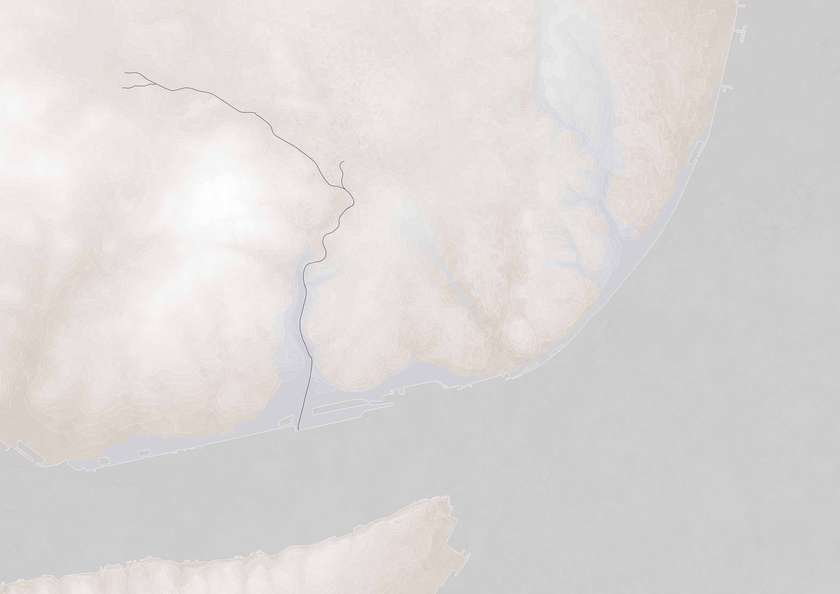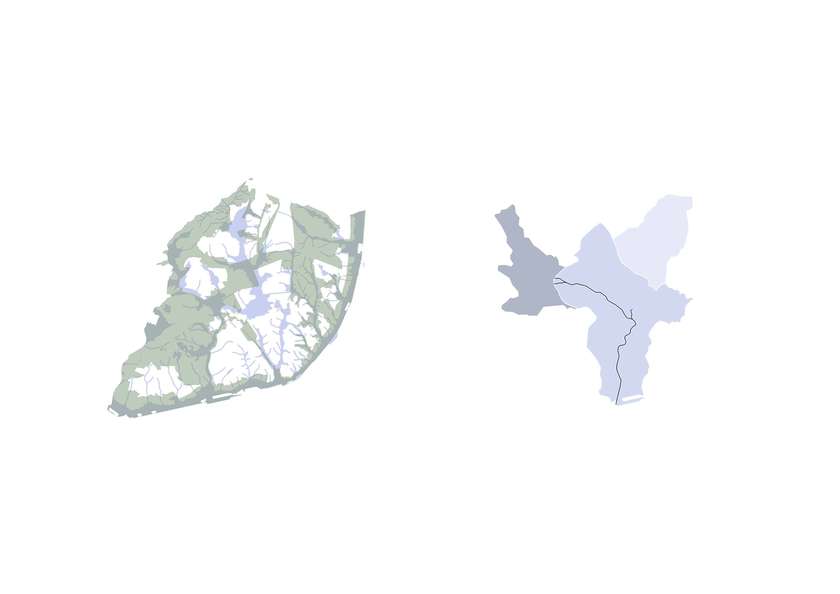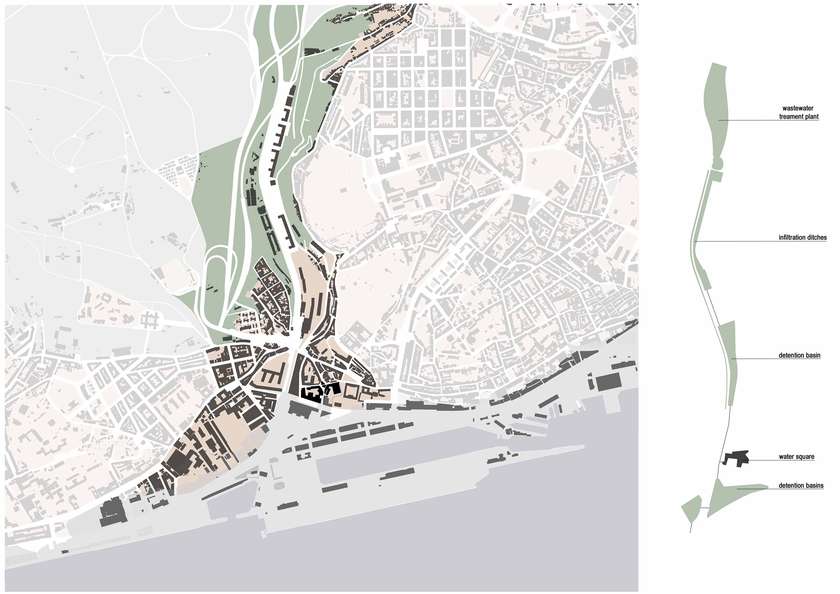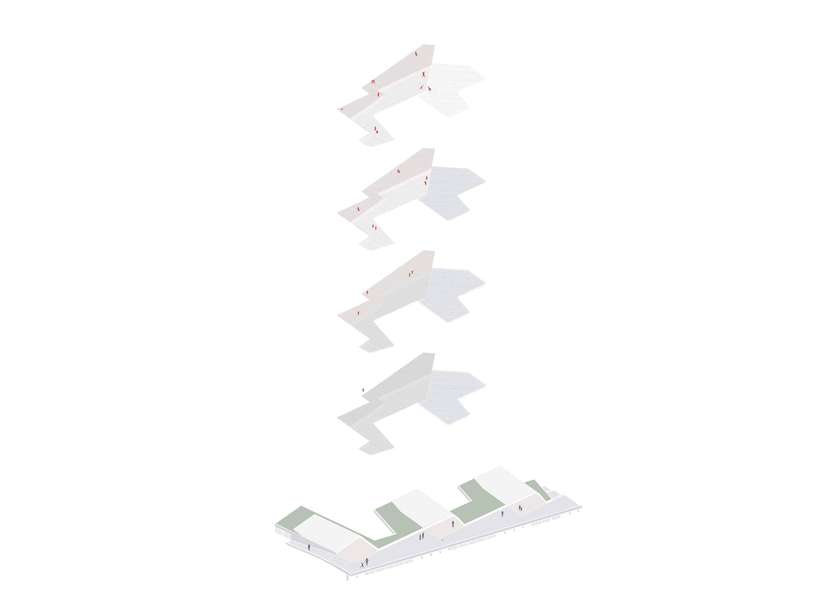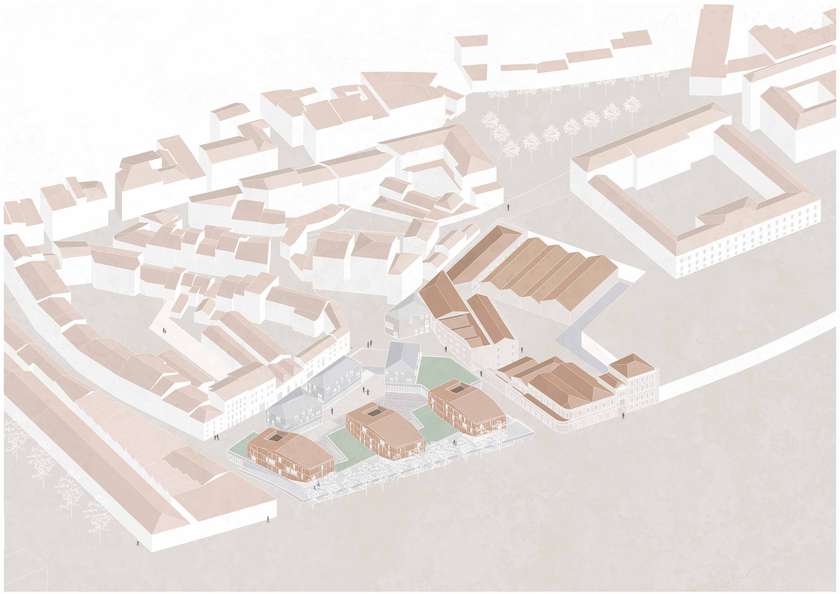Idea by
Inês Soares
Call for ideas 2020
Water Playground
Water Playground

- Site-specific cases
Among the many challenges faced by our cities nowadays, water management is one of the most pressing. In this scope, the importance of urban planning is vital to mitigate climate change.
Based in a bottom-up layered intervention, city planners can create adaptive solutions in flood-prone areas. Rather than blocking the water’s way, urban designers and architects should work with water sensitive strategies based on three basic principles: to detain, retain and discharge.
A closer look at Alcântara sets the motto for implementing these guidelines, attempting to approach the river back to the city, by incorporation of aquatic places in the experience of its public spaces.
Oscillating between rainy and dry periods, water can design urbanity and integrate its functional systems when considering the seasonality and multifunctionality of these spaces. For instance, a water square can be flooded during wet seasons as well as become a sports park during drought periods.

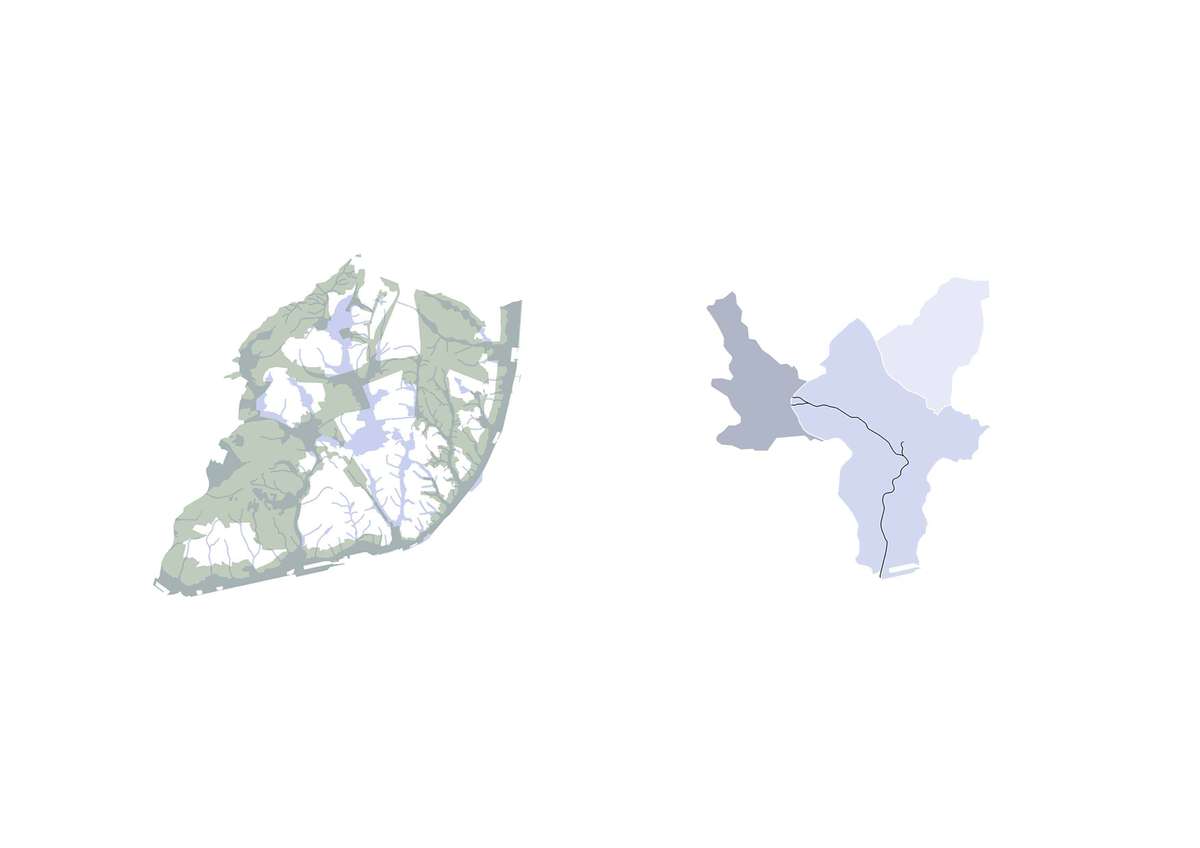
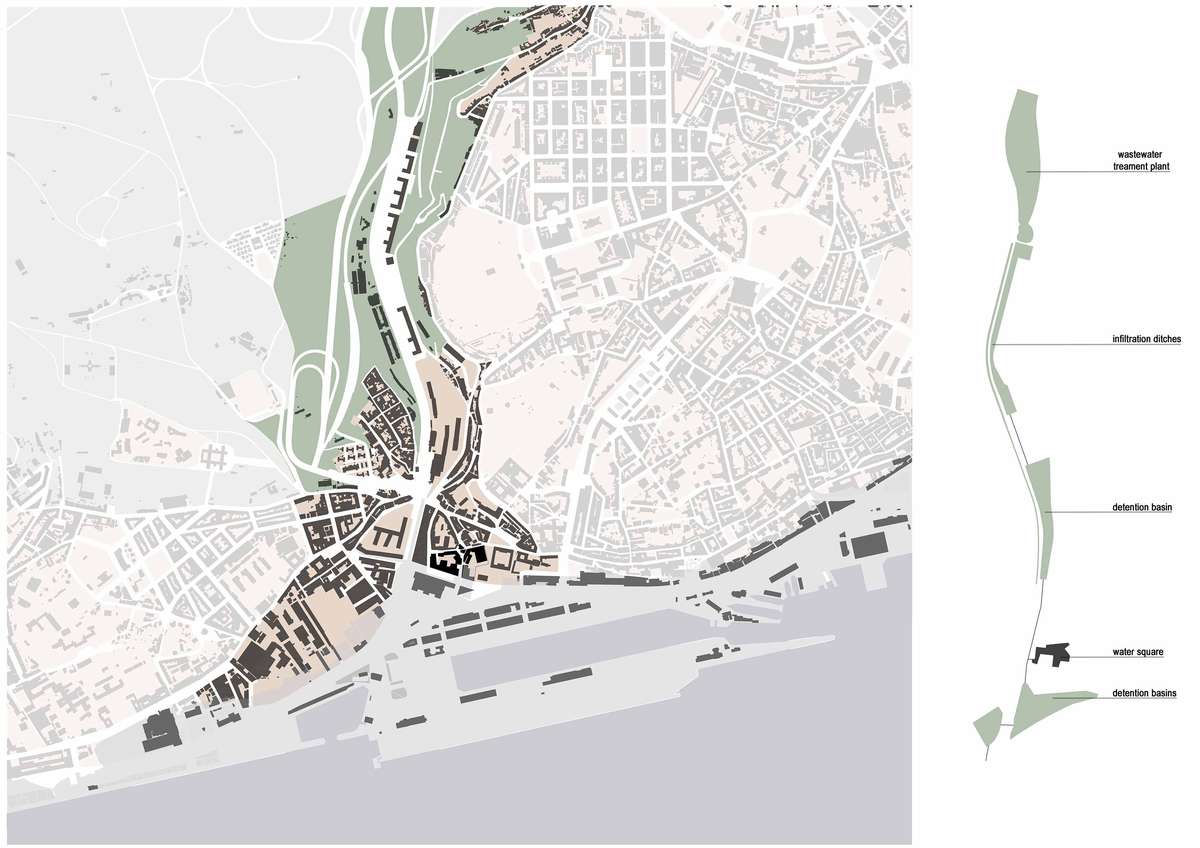

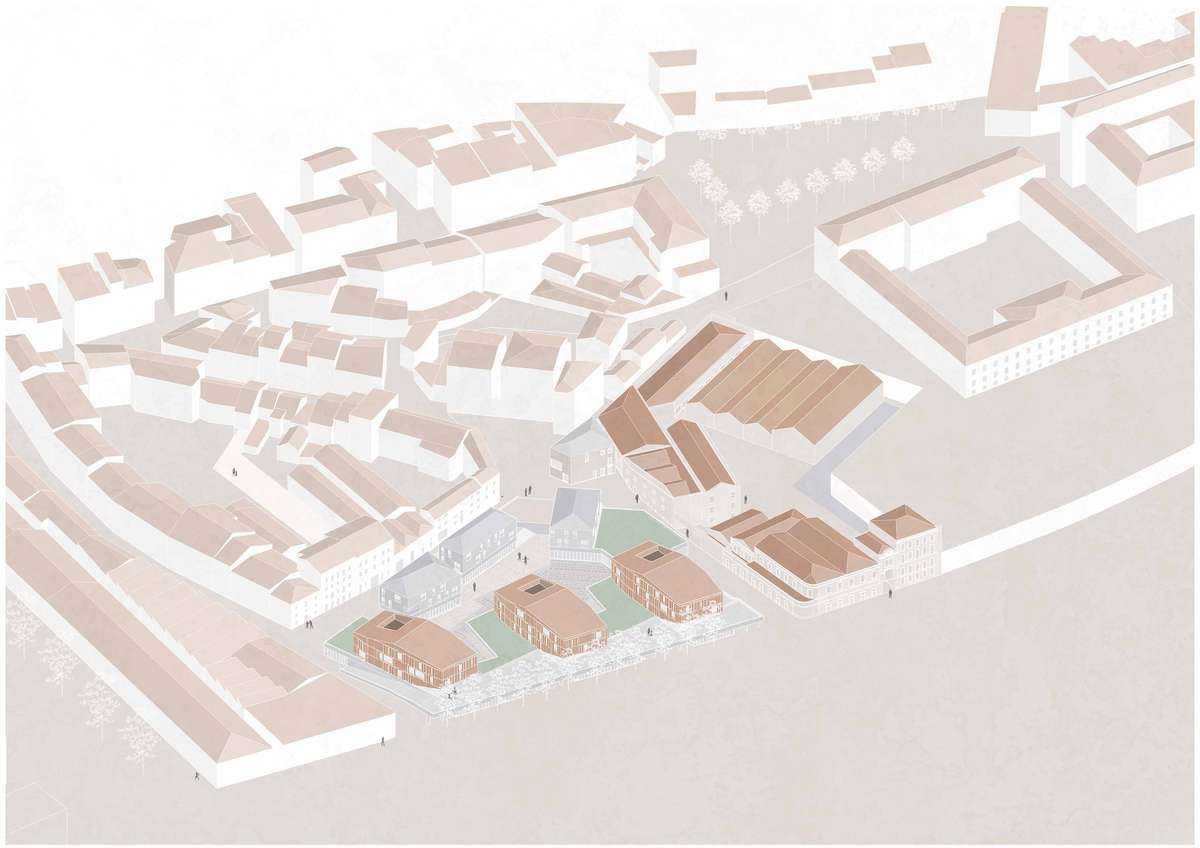
Water Playground
Water Playground

- Site-specific cases
Among the many challenges faced by our cities nowadays, water management is one of the most pressing. In this scope, the importance of urban planning is vital to mitigate climate change.
Based in a bottom-up layered intervention, city planners can create adaptive solutions in flood-prone areas. Rather than blocking the water’s way, urban designers and architects should work with water sensitive strategies based on three basic principles: to detain, retain and discharge.
A closer look at Alcântara sets the motto for implementing these guidelines, attempting to approach the river back to the city, by incorporation of aquatic places in the experience of its public spaces.
Oscillating between rainy and dry periods, water can design urbanity and integrate its functional systems when considering the seasonality and multifunctionality of these spaces. For instance, a water square can be flooded during wet seasons as well as become a sports park during drought periods.
